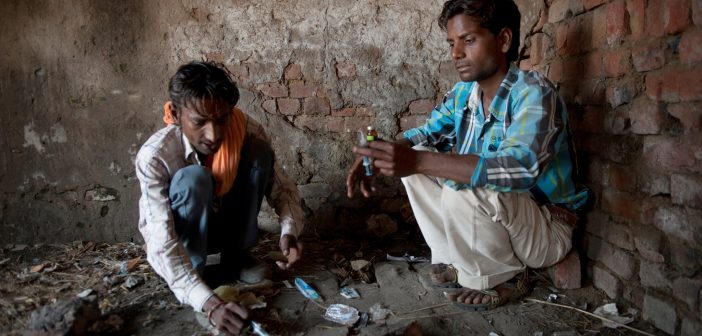India is taking a firm stand against substance use among students, implementing targeted measures to address the issue and promote a drug-free environment across educational institutions. Through comprehensive surveys, nationwide campaigns, and innovative interventions, the government has been working to curb substance use and build awareness among school and college students.
A multi-site national survey conducted by the Ministry of Social Justice and Empowerment during 2018-2019 shed light on the patterns and profiles of substance use among students. This focused thematic study, “Substance Use among Students,” involved surveys at ten different locations across the country. In a sample of 5,920 school students, 2 percent reported using cannabis, 0.6 percent used sedatives, and 2.8 percent used opioids within the past year. Among 2,533 college students surveyed, 6.3 percent reported using charas and ganja, 1.6 percent used pharmaceutical opioids, 1.5 percent reported sedative use, 0.5 percent used cocaine, and smaller percentages reported use of other substances including heroin, hallucinogens, and amphetamines.
To counter the growing issue of substance use, the Department of Social Justice and Empowerment, which serves as the nodal agency for drug demand reduction in the country, has implemented the National Action Plan for Drug Demand Reduction. Under this centrally sponsored scheme, a range of initiatives have been launched to raise awareness, offer treatment, and rehabilitate individuals affected by substance use.
The Nasha Mukt Bharat Abhiyaan, launched on August 15, 2020, initially targeted 272 districts identified as highly vulnerable to substance use and has now expanded to encompass all districts nationwide. This ambitious program is focused on raising awareness in schools, universities, and higher educational institutions, while also identifying individuals dependent on substances. The initiative connects individuals to counseling and treatment facilities available in hospitals and rehabilitation centers and enhances the capacity of service providers through training programs.
The Nasha Mukt Bharat Abhiyaan has reached over 14.79 million people so far, with a focus on engaging young people and women. More than 4.96 million youth and 2.97 million women have been sensitized through various on-ground activities. This massive outreach effort has engaged over 416,000 educational institutions to ensure the campaign’s message resonates with children and young adults. Additionally, over 10,000 master volunteers have been identified and trained to further strengthen and propagate the movement.
The Navchetna Modules, designed as a resource for teacher training, aim to increase awareness about the dangers of drug use while promoting essential life skills among school students. Forty-six community-based peer-led intervention centers, supported by the Ministry of Social Justice and Empowerment, specifically focus on vulnerable and at-risk children and adolescents. These centers provide a platform for creating drug awareness while equipping young individuals with life skills to resist substance use.
The government has also established a toll-free helpline, 14446, to provide de-addiction counseling and immediate referral services. This helpline has become an important resource for individuals seeking guidance and support to overcome substance dependency.
India’s comprehensive approach to combating substance use among students reflects the government’s deep commitment to creating a healthier and more aware youth population. By addressing substance use at its roots through education, rehabilitation, and sustained awareness campaigns, the country is laying the foundation for a society free from the damaging effects of drugs. These efforts highlight the importance of collective responsibility in securing a better future for India’s young generation while ensuring that no child or young adult is left behind in the fight against substance use.





